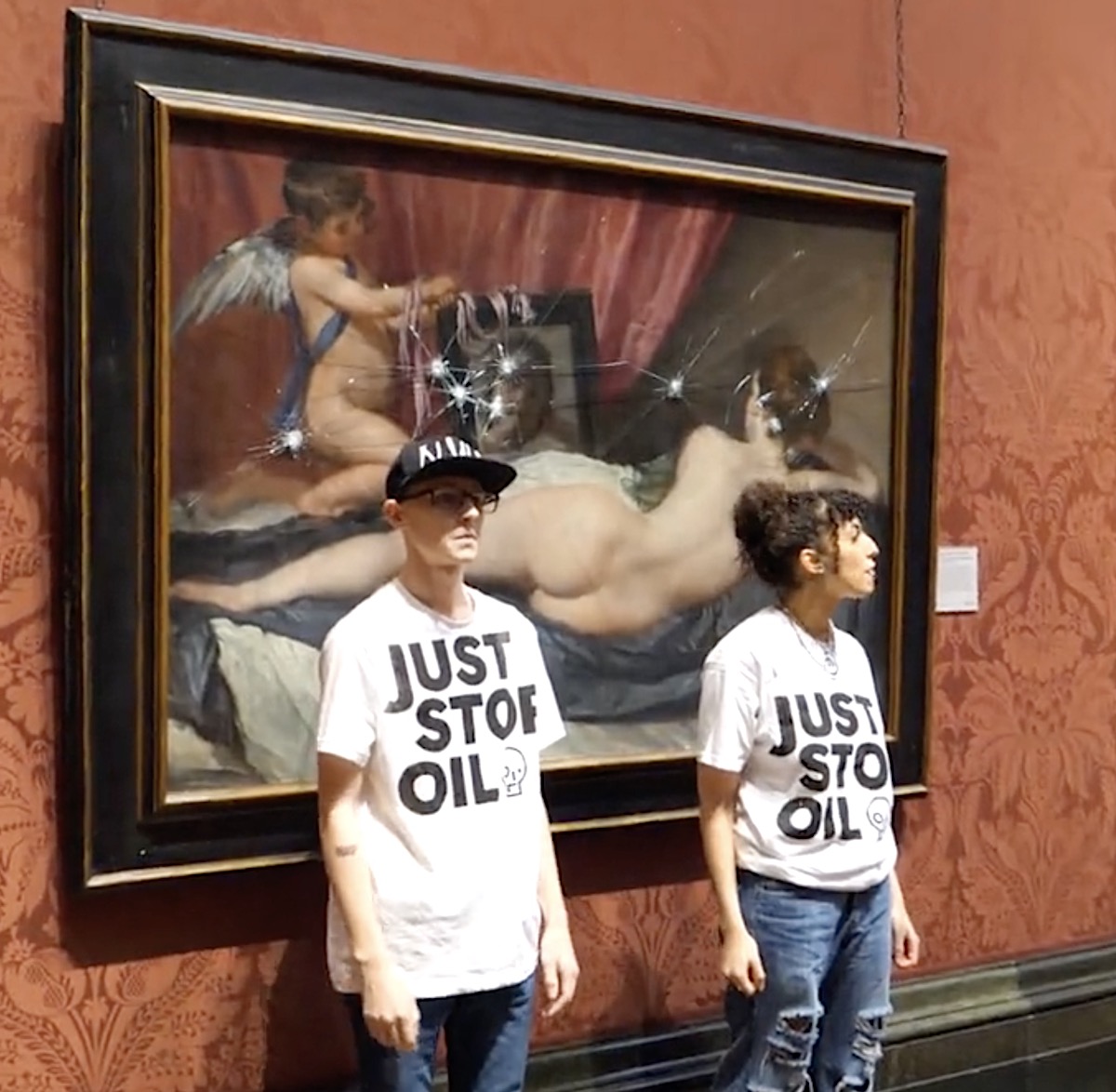Just Stop Oil activists have smashed the glass covering the Rokeby Venus, located in London’s National Gallery. The painting was originally slashed by the suffragettes in 1914. Before taking action, the protesters said, “Women did not get the vote by voting; it is time for deeds, not words. It is time to Stop Oil.
The National Gallery put out the following statement on X formerly Twitter: At just before 11 am this morning (6 November 2023) two people entered Room 30 of the National Gallery. The pair appeared to strike The Toilet of Venus (‘The Rokeby Venus’) by Velázquez with what appeared to be emergency rescue hammers. The room was cleared of visitors and police were called. Officers are now on the scene. Two people have been arrested. The painting is now being removed from display so it can be examined by Conservators.
“The Rokeby Venus”, is considered a masterpiece created by the renowned Spanish artist Diego Velázquez. Also known as “The Toilet of Venus” or “Venus at her Mirror,” this iconic artwork is celebrated not only for its exquisite beauty but also for its historical significance in the world of art.
Painted around 1647-1651 during the Baroque era, “The Rokeby Venus” is widely regarded as one of the finest examples of Velázquez’s exceptional talent and mastery of portraiture. The painting showcases a reclining nude figure of Venus, the Roman goddess of love and beauty. In the artwork, Venus is depicted gazing into a mirror held by her son, Cupid, standing beside her.
One of the distinctive features of “The Rokeby Venus” is the innovative composition employed by Velázquez. Using a mirror allowed him to portray Venus’s reflection while engaging the viewer directly, creating a sense of intimacy and allure. The painting’s sensual and intimate atmosphere, combined with Velázquez’s extraordinary skill in capturing light and shadow, has made it celebrated in art history.
The painting’s provenance is fascinating and adds to its historical intrigue. It was once owned by the famous English art collector Wynn Ellis. However, in 1906, it was slashed by the suffragette Mary Richardson in protest against the arrest of Emmeline Pankhurst, a prominent leader in the women’s suffrage movement. Fortunately, the painting was expertly restored, preserving its magnificence for future generations.
Mary Richardson chose to target Velázquez’s painting, “The Rokeby Venus,” for her act of protest in 1914 for a few reasons. First and foremost, Richardson aimed to make a significant statement by attacking a revered artwork, drawing attention to the suffragette cause through a highly visible act of defiance.
“The Rokeby Venus” was a particularly symbolic choice due to its portrayal of a nude woman, a subject matter that had been historically controversial. By attacking this painting, Richardson aimed to challenge traditional notions of female beauty and modesty, questioning societal norms that restricted women’s freedom and expression.
Furthermore, Richardson’s act was meant to provoke public discourse and draw attention to the suffragette movement. By targeting a famous artwork, she ensured that her protest would be widely reported, sparking debates about the suffragette cause and the treatment of women in society.
In choosing such a high-profile target, Richardson effectively used shock value to amplify the suffragettes’ message, drawing attention to the urgency of their fight for women’s rights and the need for societal change.
“The Rokeby Venus” is housed in the National Gallery in London, where it was displayed until the painting’s removal after damage to the glass. Historians have considered the painting one of Velázquez’s seminal works. Its enduring legacy lies not only in its artistic brilliance but also in its ability to spark discussions about beauty, femininity, and the power dynamics between the viewer and the subject. Diego Velázquez’s masterpiece remains a timeless symbol of artistic ingenuity and a testament to the enduring allure of classical art.

